Category Archives: Translation technology
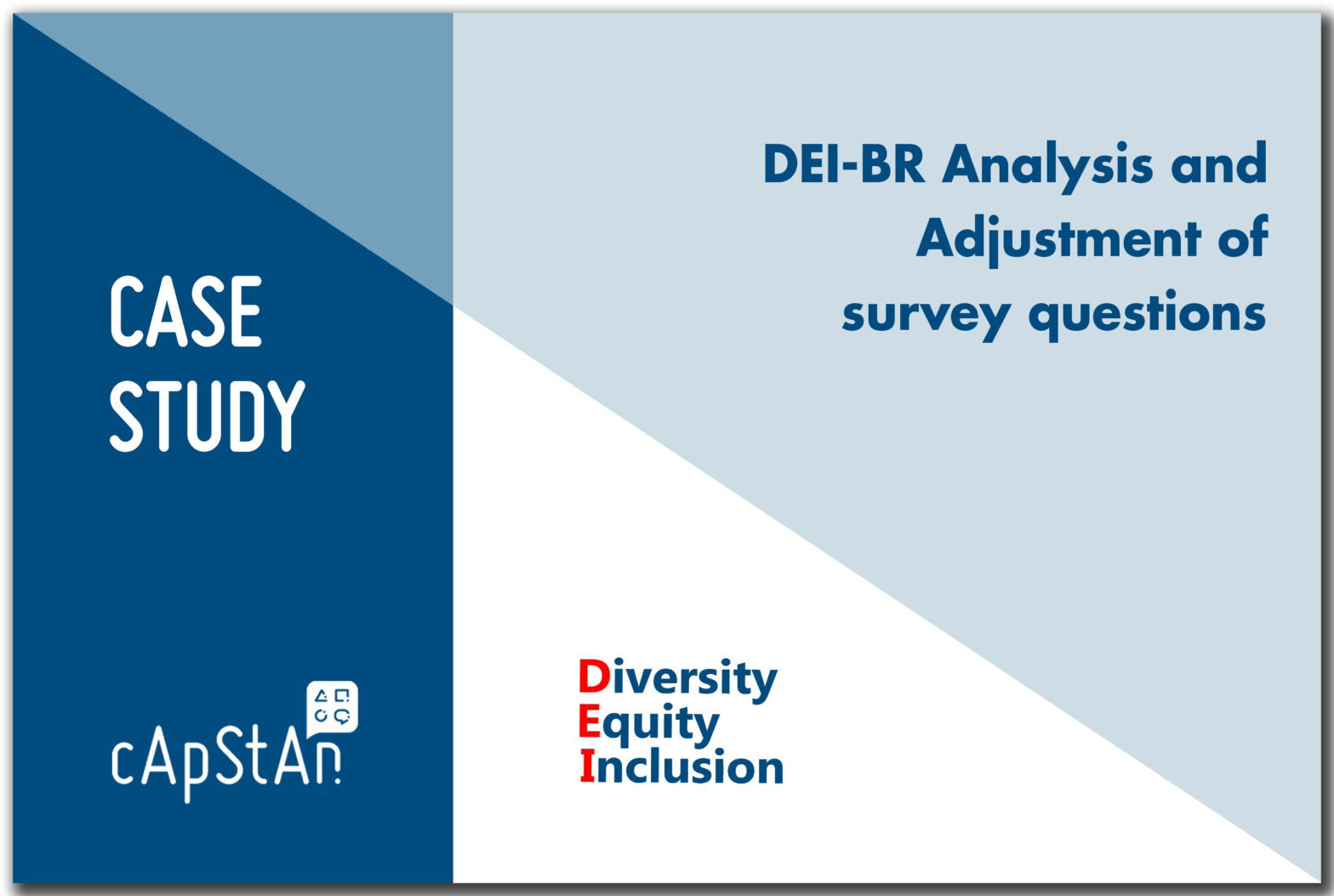
Diversity, Equity, Inclusion and Bias Reduction: DEI-BR Analysis and Adjustment of survey questions
Awareness of diversity, equity, inclusion and bias reduction (DEI-BR) in surveys is growing, becoming increasingly indispensable as it ensures the reliability of any data collection instrument. cApStAn is a language service provider with a 20+ year experience in partnering with organizations who administer surveys in multiple languages and cultures. Our initial contribution to DEI-BR started …
Read More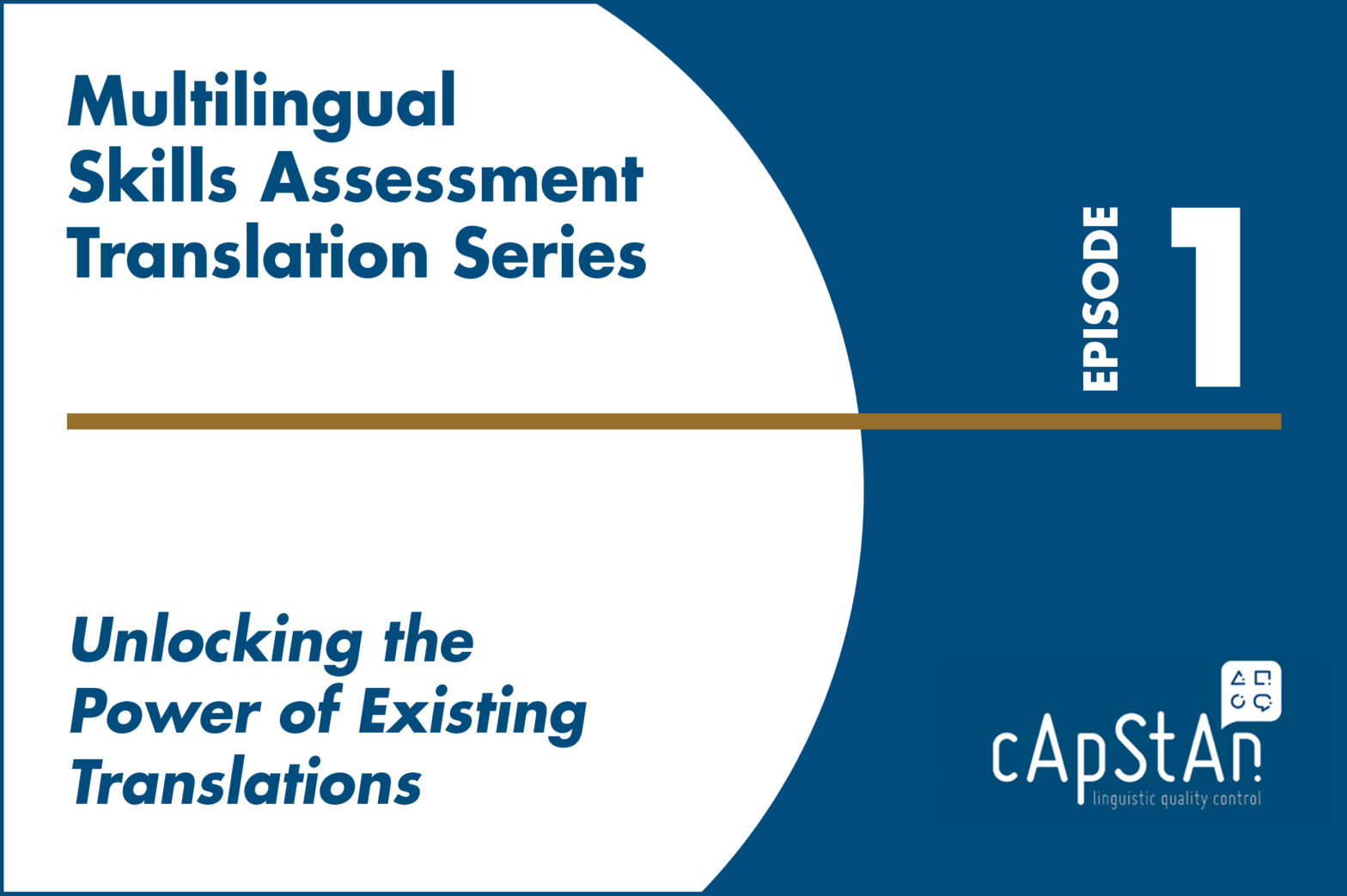
Multilingual skills assessment translation series, Episode 1: Unlocking the power of existing translations from a previous test cycle
This is the first episode of an informative series on good practice in skills assessments translation. It is based on cApStAn’s extensive experience in the multilingual assessments on which we have worked with reputable testing organisations. The purpose of the series is to illustrate the complexity of test translation and the added value of a …
Read More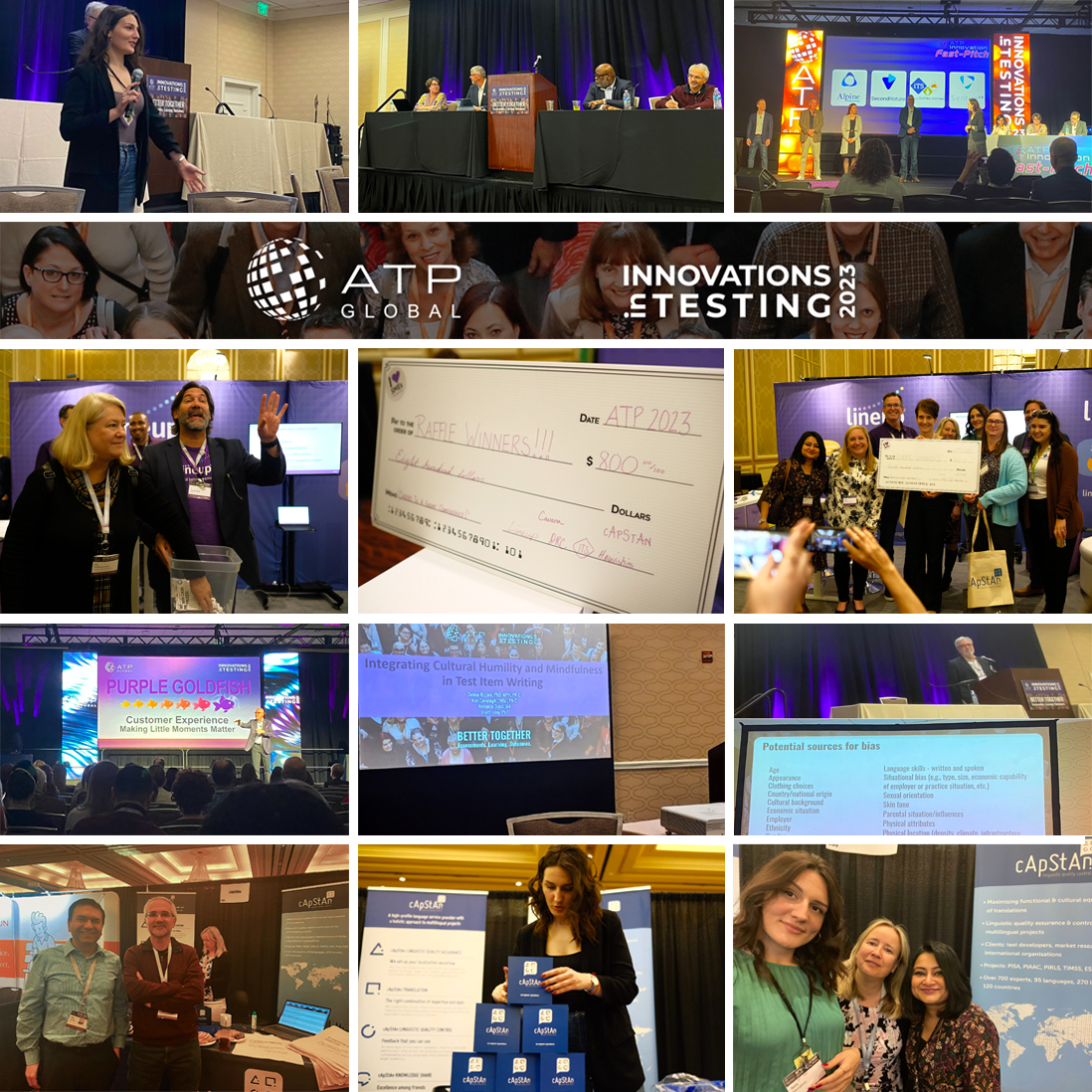
ATP “Innovations in Testing” 2023 Conference in Dallas, USA, March 12-15, 2023
cApStAn was a proud sponsor of the Annual ATP “Innovations in Testing” conference which took place March 12 to 15 in Dallas, USA. cApStAn was represented by the business development team, Devasmita Ghosh and Nela Manojlovic, as well as Musab Hayatli and Laura Wäyrynen from cApStAn’s US office. The conference provided a great opportunity, as …
“ATP “Innovations in Testing” 2023 Conference in Dallas, USA, March 12-15, 2023“
Read More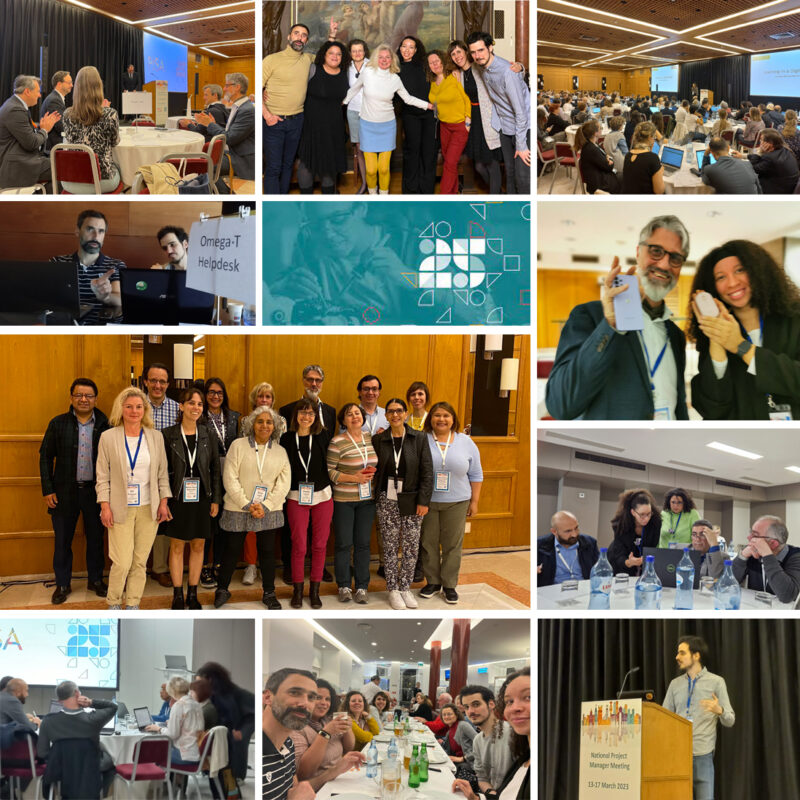
OECD PISA 2025 National Project Managers’ meeting in Lisbon, 12-17 March 2023
cApStAn is the international contractor in charge of linguistic quality assurance in PISA 2025. This includes training participating countries/economies to follow a standardised translation and adaptation approach and using mature translation technology: cApStAn’s presence was prominent in Lisbon for the first PISA 2025 National Project Managers’ meeting from March 12 to 17, 2023. PISA 2025 …
“OECD PISA 2025 National Project Managers’ meeting in Lisbon, 12-17 March 2023“
Read More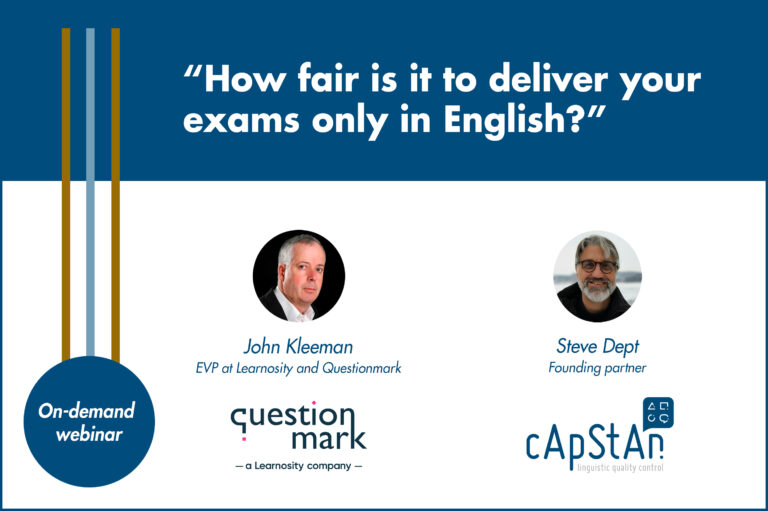
How fair is it to deliver your exams only in English?
In the 21st century, “accessibility” often includes language, but translating a test into the strongest language of all test takers may not be realistic. Nevertheless, passing or failing a test should not depend on reading proficiency. Tests and exams are a gate for life chances and—unless being proficient in the language of the test is …
“How fair is it to deliver your exams only in English?”
Read More
Walking at a Brisk Pace, by cApStAn’s co-founder Steve Dept
With the epic backdrop of geopolitical turmoil and environmental urgency, it may seem awkward to dwell on our minute successes. What with the barbaric invasion of Ukraine? What with the courageous revolt of the Iranian people in general and of Iranian women in particular? What about the denial of the right to education for Afghan …
“Walking at a Brisk Pace, by cApStAn’s co-founder Steve Dept “
Read More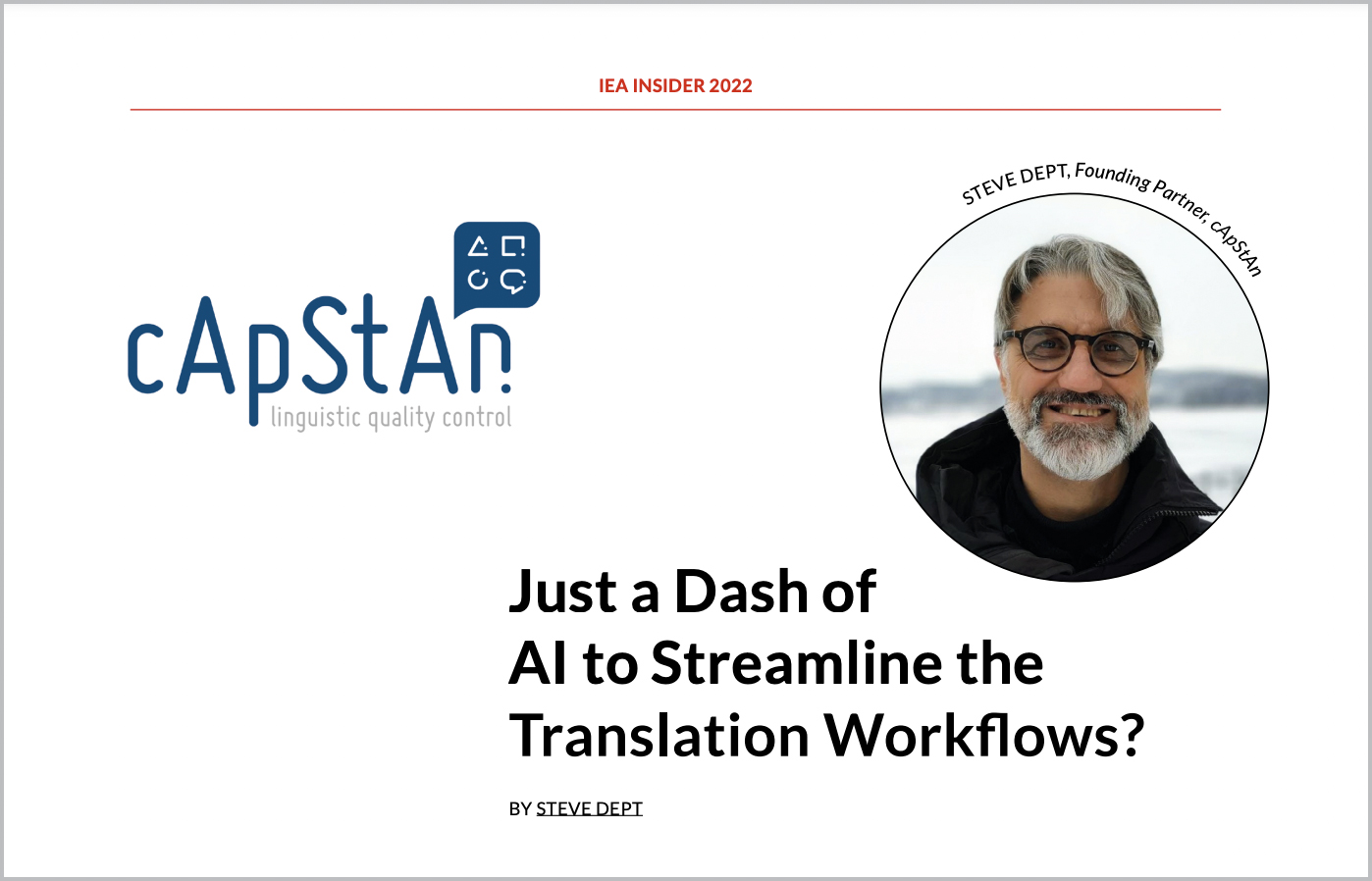
Latest “IEA Insider” now out featuring article by cApStAn LQC co-founder Steve Dept
The latest edition of the International Education Association (IEA)’s newsletter, the IEA Insider, is just out! It is released annually at their General Assembly and this issue features an article by cApStAn founder Steve Dept. In the article Steve talks about cApStAn’s experience with machine translation (MT) and (human) post-editing, and reflects on the role …
“Latest “IEA Insider” now out featuring article by cApStAn LQC co-founder Steve Dept”
Read More
After automated post-editing, APE, the next new hot topic is automated (human) translation error correction, or TEC
Imperfections in machine translation (MT) have long motivated systems for improving translations post-hoc with automatic post-editing (APE). (1) In contrast, up to now, little attention had been devoted to the problem of automatically correcting human-generated translations. A study introducing for the first time ever an automatic human translation correction model (TEC) was presented by language …
Read More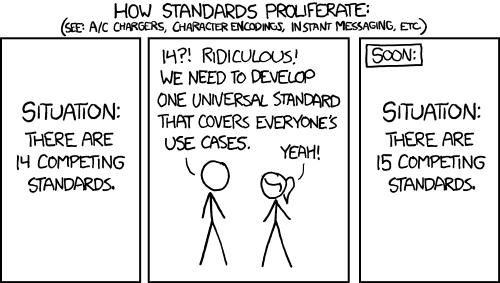
A Brief Introduction to Translation Technology Standards, Tools & Best Practices
by Adrien Mathot, Translation Technologist @cApStAn First of all what is a standard? According to the European Committee for Electrotechnical Standardization (CENELEC) standards “provide people and organizations with a basis for mutual understanding, and are used as tools to facilitate communication, measurement, commerce and manufacturing.” What happens when things are not standardised Or are not …
“A Brief Introduction to Translation Technology Standards, Tools & Best Practices”
Read More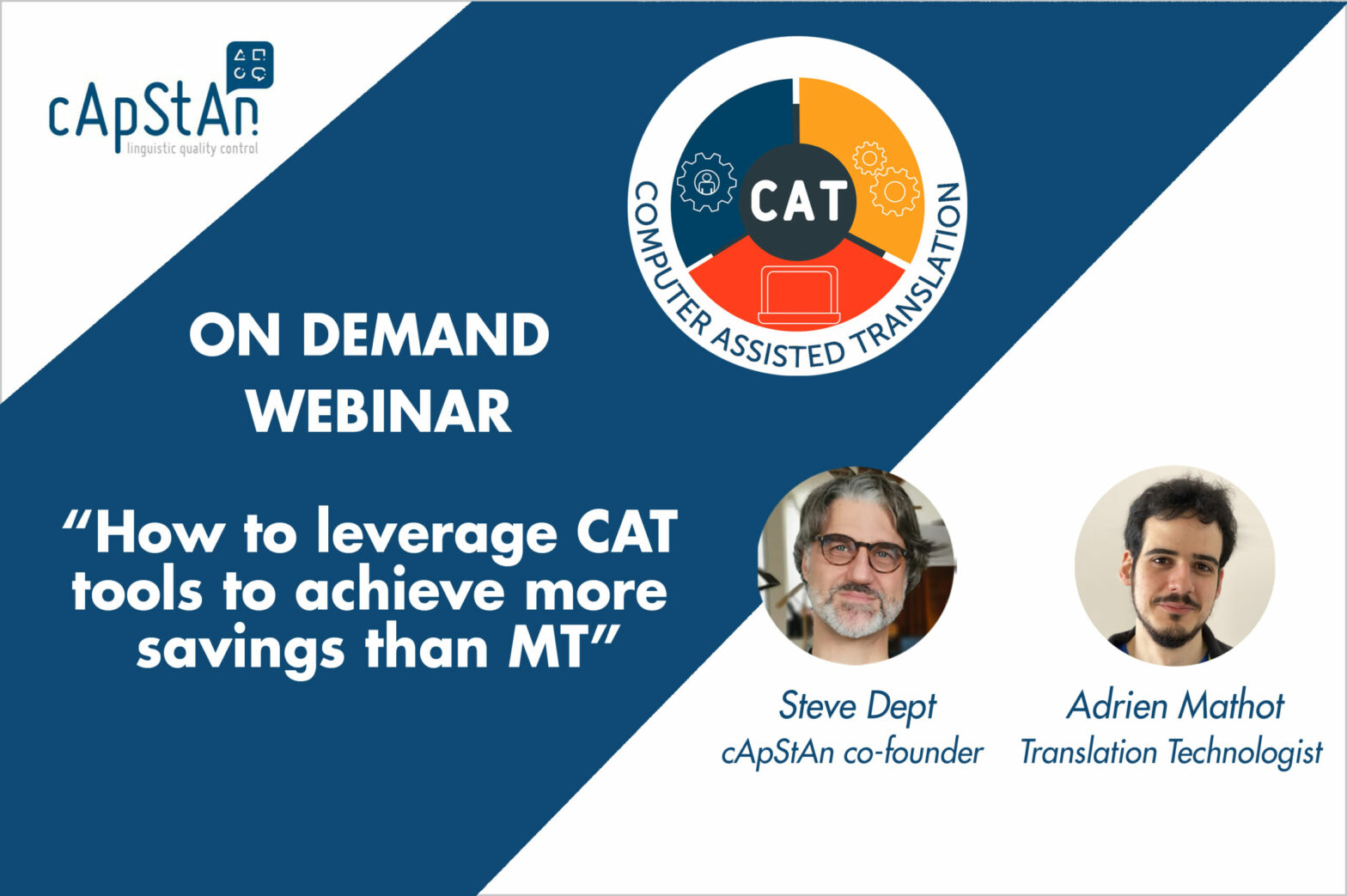
On-Demand Webinar | How to leverage CAT tools to achieve more savings than MT
Computer-assisted translation tools (CAT tools) have been around for 30 years, and they are designed as productivity tools for professional translators. Using CAT tools effectively increases quality, consistency and productivity at scale. Term bases, style guides and translation memories form a powerful combination that (still) give the human translator a competitive edge in terms of quality/price …
“On-Demand Webinar | How to leverage CAT tools to achieve more savings than MT”
Read More
In South Africa a new AI-based project offers the opportunity for a large corpus of scientific terms to be translated into six indigenous languages
by Pisana Ferrari – cApStAn Ambassador to the Global Village Language really matters when it comes to scientific communication and education. How can you have conversations about science when the scientific terms you wish to talk about do not exist in your own language? Sibusiso Biyela is a science communicator and journalist from South Africa, …
Read More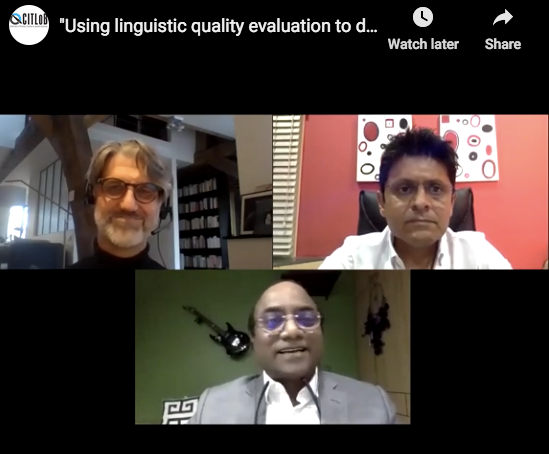
Using linguistic quality evaluation to drive revenue
by Pisana Ferrari – cApStAn Ambassador to the Global Village Webinar hosted by CITLoB with Steve Dept and Sandeep Nulkar, 7.1.2021 “Quality is the most used word in our industry but it is one thing to say you provide quality translation, it’s another to say you can actually measure it”. These opening words by Sandeep …
“Using linguistic quality evaluation to drive revenue”
Read More